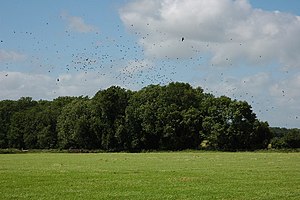Today's guest, Hilary Melton-Butcher barely needs an introduction. She's the prolific and terrific lady whom we admire for her uniquely told stories of history and mystery. A visit to Positive letters...inspirational stories is always a treat. Today she's doubling up with two linked posts, one here, one at Life is Good. Don't miss either one!
Weedy
Seadragon …
Art,
Science, ‘Down
Under’
and bloggers … Tina of Life is Good asked if I’d do a guest post
for the A-Z blog and as a guest blogger on her blog … theoretically
these might have been on Vikings (these will follow) – but as is
the way with my eclectic brain I’ve settled on the Weedy Seadragon
and the Great Australian Coast Road.
I
expect many of you will have seen or heard of the BBC tv programmes
‘Coast’, where Neil Oliver, archaeologist, historian, author and
broadcaster, tells us about Britain and Europe …
… he
has now moved to Australia (well perhaps he’s travelled there for
the programmes!) – this is where these two ideas stemmed from.
"Weedy Seadragon - taken from the sketchbook of William Buelow Gould - 1832"
Weedy
Seadragon – who could ignore such a wonderful name for
‘Phyllopteryx
Taeniolatus’?
This amazing little seadragon and its sister, the ‘Leafy
Seadragon’
are found around the shores of southern Australia.
"Leafy Seadragon"
These
endangered, endemic to the south Australian coast, little
‘prehistoric monsters’ are just a delight to see and to have
found.
Perhaps,
now I’ve looked, even more interestingly … they were drawn and
painted by William Buelow Gould, a convict – who had been caught
stealing a coat and then was sentenced in 1826 to “seven
years beyond the seas”,
a phrase indicating transportation to the then penal colony of
Australia.
He
had a wife and two children … but once shipped out, few convicts
returned. He also didn’t change his ways … and got sentenced to
the Macquarie Harbour Penal Station, one of the harshest, for forging
a banknote.
The
only way to the prison was by ship … but it got weather bound …
and the convicts aboard mutinied with half of them taking the ship.
Gould and the other convicts stuck with the officers … before
setting off overland to get help.
For
this Gould’s term was commuted; he was assigned as a house servant
to the colonial surgeon Dr James Scott, who was also an amateur
naturalist.
Scott
put Gould’s artistic talents to use, having him paint watercolours
of native flora – which today are regarded as being of a high
technical standard.
Even
now he couldn’t remain out of trouble and so was again sentenced to
Macquarie Harbour, but based on his reputation he worked for another
amateur natural historian, Dr William de Little on Sarah Island at
the penal station.
This
time he produced landscape sketches about life at the penal stations,
as well as still life watercolours of botanical specimens, birds,
fishes and other sea life.
Despite
being granted his Certificate of Freedom in June 1835 he descended
into a cycle of drunkenness, poverty and prison sentences for theft …
he had remarried in 1836, but eventually died in 1853, aged 52 or
thereabouts.
His
sketchbooks and works are now highly acclaimed; his “Sketchbook
of Fishes”
being inscribed on the UNESCO Australian Memory of World Register …
this is the equivalent of a World Heritage listing for historic
documentary material.
It
is noted that Gould sketched a number of species for the first time;
and his works are recognised as being of enormous value to scientists
today … and he’s even had a novel written by Richard Flanagan,
published in 2001, from his Sketchbook
of Fishes.
I’d
better return to my little prehistoric monsters … the Weedy
Seadragon and Leafy Seadragon … are marine fish related to the
seahorse.
The
weedy appendages provide camouflage … but don’t have the
prehensile tail like the seahorse … they drift or move very slowly
… not far at all.
They
blend in so well to their natural surroundings … that they aren’t
detected as a food source … the real threat is from us humans as
when there is so much pollution in the water it makes it very
difficult for them to survive … but when their natural habitat is
taken away then it is a real threat for them to blend in and remain
hidden.
Like
seahorses the males nurture the young … the female lays them into
her mate’s pouch on his abdomen … about nine weeks later they are
born and have immediately to care for themselves.
The
southern coast of Australia was full of prehistoric, now extinct,
monsters five million years ago … the seas were 2 – 3 degrees
warmer and contained life that we don’t see today …
- A huge shark – as big as a bus
- A penguin as tall as a man
- A killer mammoth sperm whale
We
know this from the wealth of fossils that can be found around this
area of coast today …
Then
these pretty little prehistoric
monsters
have a wonderful tale to tell – let alone the fact that we have had
a record of them for about 180 years
… they
probably evolved from those aquatic vertebrates now buried by this
ever changing earth of ours.
I
say here’s to the Weedy Seadragon and to the Leafy Seadragon …
you have made me smile while I think about you both … and increased
my desire to go down under!
Hilary
Melton-Butcher
©2014
All Rights Reserved
Photo credit: Weedy Seadragon
Photo credit: Leafy Seadragon
Thanks, Hilary. It's always so fun to learn about the people behind the books, and that back story, which wow, I would not have predicted! Readers, time to go see about the Australian Coast! See you at my place.
~Tina




























